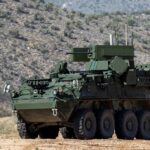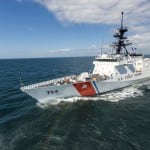The House Armed Services subcommittee on readiness addressed several issues raised by reviews of Navy destroyer collisions in the Pacific last summer in its mark of the FY ’19 National Defense Authorization Act (NDAA).
The mark would require the Secretary of the Navy to limit the forward deployment of Navy vessels to 10 years. However, the bill allows the secretary to waive the requirements for individual vessels when he notifies the congressional defense committees.

The same bill section also directs all current forward deployed vessels that have spent over 10 years overseas to be rotated back to a U.S. homeport within three years. The secretary is also instructed to provide a briefing to the defense committees on his rotation plan for the forward deployed ships.
A committee staffer said more than half of the forward deployed ships have spent more than 10 years deployed overseas while the bill states over 14 percent of the Navy’s ships are based at ports overseas.
Another section of the mark requires the secretary to provide a report to Congress on optimizing Navy vessel inspections and crew certifications to reduce redundancies and the burden of inspections ships undergo.
The language says the Navy’s Comprehensive Review of the Pacific region surface force incidents identified an overabundance of inspections and certifications as well as a large increase in the operating tempo of individual ships but reductions in the time to perform maintenance, training, and readiness certification.
“Given the continued operational demand on the fleet, the committee believes that the Navy should reduce the burden of inspection type visits that ships undergo,” the bill said.
As part of this reduction in redundancies the bill requires the secretary to provide an interim briefing to Congress on optimizing inspections by Jan. 2019.
The bill would also change the U.S. Code to provide that examination of naval vessels by the Navy’s Board of Inspection and Survey (INSURV) after Oct. 1, 2019 shall be conducted on a no notice basis. The same section also directs a report on the results of such inspections be unclassified and available to the public.
INSURV conducts acceptance trials of ships and conducts material inspections of all naval ships at least once every three years when practical.
A committee staffer said the subcommittee wants the Navy to have fewer inspections and more time to train while another staffer said the no-notice method would forces ships and battle groups to keep their material readiness and warfighting proficiency up all the time.
Importantly, the mark devotes a section attempting to clarify and centralize Navy commanders responsible for ensuring all forces are available for tasking and deployment. The bill notes Secretary of the Navy Richard Spencer’s Strategic Readiness Review “cited unclear command relationships as a contributing factor to the surface force accidents suffered by 7th Fleet ships in 2017.”
The mark requires the Secretary of the Navy to designate a single commander responsible for tasking and deployment of all forces, including forward deployed forces. It recommends designating the head of Fleet Forces for this force generation work, because he already is responsible for this except within the U.S. Pacific Fleet.
The mark also requires the secretary to designate a sole commander for all Navy shipyards, including those overseas, and recommends the commander of Naval Sea Systems Command (NAVSEA) for the role. The subcommittee notes the NAVSEA head “has the overall responsibility within the Department of the Navy for scheduling and maintaining Navy vessels in public and private shipyards, with the exception of the U.S. Naval Ship Repair Facility and Japan Regional Maintenance Center.”
The recommendation for Fleet Forces to lead all force generation rubs against the “Inouye Amendment” that has kept the Pacific Fleet separate on readiness generations and engagement for years. In 2006, the Navy centralized readiness by creating Fleet Forces Command, which contained the former Atlantic Fleet.
However, the former Sen. Daniel Inouye (D-Hawaii) sought to maintain the Pacific Fleet’s separation, which is based in Hawaii.
Appropriations bills for years have included his language, even years after his death, which says that none of the funds for the DoD may be obligated to modify command and control relationships to give Fleet Forces operational and administrative control of Pacific Fleet forces.
A staffer said HASC is trying to work with the appropriations committee to come to an agreement on the issue because if the two bills do not agree, the appropriations text would overtake this change.

 By
By 











